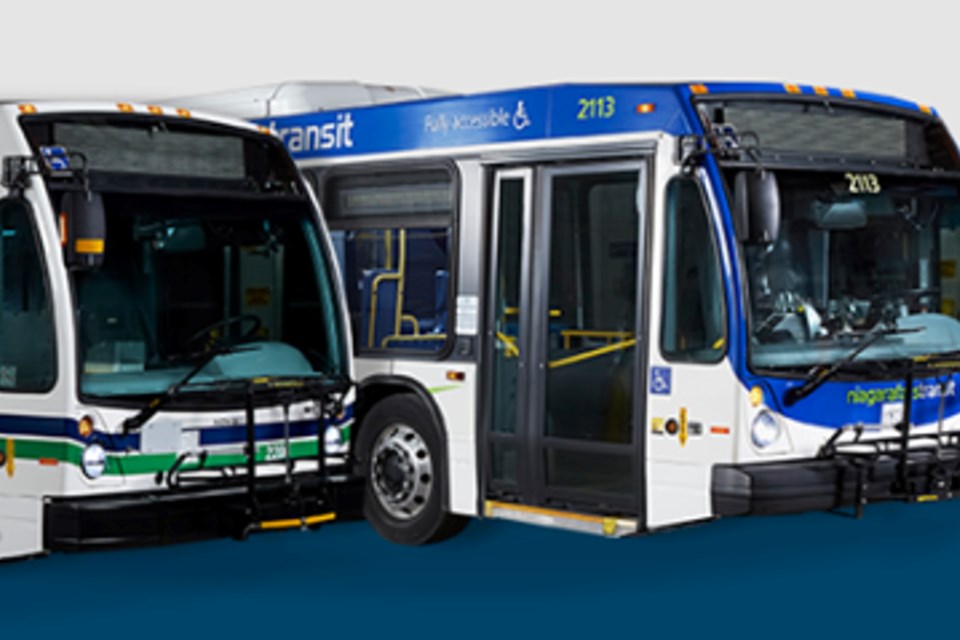Pelham is investing in demand-responsive transit, which blends the best of public transport with ride-hailing’s most popular features. On-demand transit is growing rapidly around the world because it offers a new, more equitable way to address transit deficiencies. For residents without access to mobility solutions or reliable paratransit networks, being able to request a ride in real time can be a lifeline at the cost of a ticket.
This month, the Canadian Association of Municipal Administrators awarded the 2024 Collaboration Award with Municipalities to Niagara Region Transit. This award is recognition that the solution is not always going to be more financial resources, and so it becomes really important to understand how we can collaborate and work together.
In 2021, Niagara Region wisely directed that the ‘preferred approach’ was the ‘assumption of existing specialized and demand responsive services and contracts by the Commission’. I am pleased to say that the latest development on the transit file, which I will describe below, achieves the direction of the Regional Council and furthers the collaborative ambitions of our communities.
The Integration Project
On July 1, 2024, the existing five independent micro-transit contracts will be integrated and consolidated into one specialized and on-demand contracted transit service across Niagara. The contract with Voyago is valued at $15 million per year and runs until August 2026 with an option for an additional one year. The new contract realizes a cost reduction of 20 percent over the life of the contract.
The First Priority-Smoothing
Niagara Transit started operating on January 1, 2023. Anticipation has been the thing because we have had to deal with many unanticipated issues. It took a lot of effort, but the transition was completed with very little impact on our transit users.
More recently, in April 2024, the new Customer Experience department was launched to consolidate the scheduling, dispatch and customer support functions: a necessary step toward a smoother and more connected transit service.
The Second Priority- Integration – The Big Step for Pelham
The primary strategic objective has been to expand and integrate Pelham’s on-demand access to easily access more transportation hubs and remove the fragmented approach to transit. The new business model for specialized and on-demand transit allows for greater inter-municipal flexibility.
Pelham users will now have direct access to the fixed route bus systems through three locations in St. Catherines, namely the St. Catherines Bus Terminal, the St. Catherines Hospital, and Brock University.
Pelham users will also gain access to the fixed route bus systems through four locations in Welland, namely the Welland Bus Terminal, Seaway Mall, the Welland Hospital and Niagara College (and the YMCA).
These improvements alone will improve access to education and healthcare by an estimated 40 percent. And it's really important to know that the new inter-municipal specialized transit service will now move eligible customers from any origin in one municipality to any destination in another municipality.
Specialized transit service will now move eligible customers from any origin in one municipality to any destination in another municipality
The Request for Proposals very skillfully allowed for many important future service enhancements. The new contract includes provisions for negotiating expanded hours of service, Saturday service, Sunday service and holiday service.
There will be new service standards for on-time performance, vehicle cleanliness and maintenance, driver training and management and supervision. Vehicles will be equipped for GPS tracking and cameras for the safety of everyone. As an example of the new service standard, for rides not booked in advance, the wait time is to be under 30 minutes.
The Second Objective
The second objective must be to program Pelham’s on-demand vehicles by using technology to get at real-time supply and demand data. This will allow NTC to make better operational decisions and optimize driver hours and vehicle fleets. Transit vehicles will be dynamically routed to the final destination, picking up other travelers along the way who are heading in the same direction for efficient, shared rides.
The Third Priority- The Full Master Business Plan 3Q2025
I come from the school that says that planned work is 40 percent cheaper than unplanned work and that is why I am looking forward to our next planning steps. As a Commission, we have many things to decide. It’s a chance to go back to the foundational principles and construct a new transit system.
Over the next year, the Commission will decide on a fleet strategy, a route strategy, a facilities strategy, a branding strategy and more. All of these strategies need to satisfy the community's legitimate needs for accessibility, affordability and equity. Understanding and observing the transit community’s capacity to change gives me confidence that it will get done.
There’s an App for That: Niagara Region Plus App
Niagara Region Transit is dedicated to supporting you through this transition. There are resources to assist you in downloading and setting up the new app. The support team may be reached at 1-833-678-5463.
Finally, a note of acknowledgment and appreciation. Niagara Transit has made a lot of progress. None of it would be possible without the excellent cooperation of our transit partners. Our frontline workers and their union representation have been very focused on solutions based upon the customer. That’s a formula for success. They have my deepest gratitude.
Councillor Wayne Olson represents Pelham’s Ward 1.
